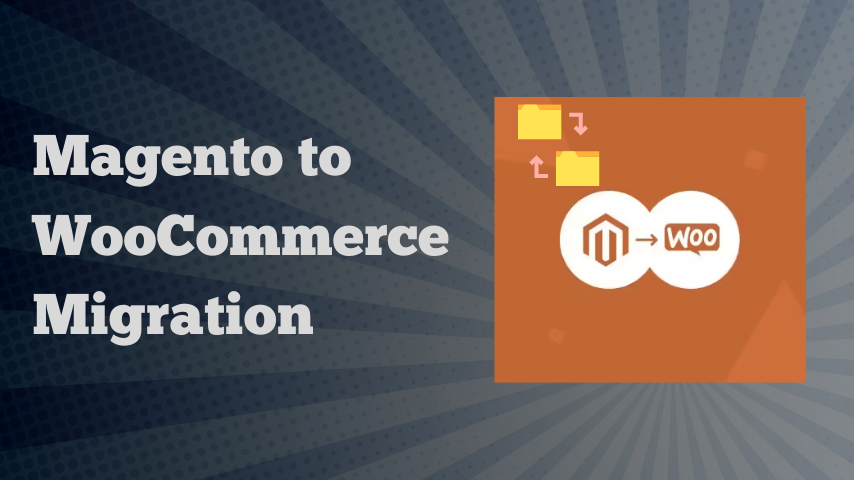
Migrating your online store from Magento to WooCommerce can be a strategic decision to enhance flexibility, user-friendliness, and cost-effectiveness. WooCommerce, a WordPress-based platform, offers unparalleled customization options, ease of use, and a vast ecosystem of plugins to support various business needs.
This article explores the key ways to migrate your store from Magento to WooCommerce, providing a comprehensive guide to make the process seamless and effective.
Why Migrate from Magento to WooCommerce?
Before diving into the migration process, let’s explore why WooCommerce is an attractive alternative to Magento:
- Cost-Effective: WooCommerce is open-source and eliminates the high licensing costs associated with Magento.
- Ease of Use: Designed for users of all technical levels, WooCommerce simplifies store management with an intuitive interface.
- Customization: Offers extensive plugins and themes to tailor your store to your business needs.
- Scalability: Perfect for businesses of all sizes, WooCommerce can grow alongside your store.
- SEO-Friendly: Built on WordPress, WooCommerce is inherently optimized for search engines.
Pre-Migration Checklist
Before beginning the migration process, follow this checklist to prepare your store:
- Backup Your Data: Ensure you have a complete backup of your Magento store, including products, customer data, orders, and settings.
- Choose Hosting for WooCommerce: Select a reliable hosting provider that supports WordPress and WooCommerce.
- Install WooCommerce: Set up a fresh WordPress installation and install WooCommerce.
- List Features to Migrate: Identify the essential elements you want to migrate, such as products, categories, customer data, and order history.
- Select a Migration Tool: Choose a migration plugin like the Magento to WooCommerce Migration Plugin.
Ways to Migrate from Magento to WooCommerce
1. Manual Migration
Manual migration involves transferring data manually from Magento to WooCommerce. While this method offers complete control, it can be time-consuming and requires technical expertise.
Steps:
- Export your Magento store data in CSV format.
- Use WooCommerce’s import feature to upload products, categories, and customers.
- Configure settings, payment gateways, and shipping options manually.
Pros:
- Complete control over the migration process.
- Suitable for small stores with limited data.
Cons:
- Time-intensive and prone to errors.
- Requires technical skills for large-scale stores.
2. Using Migration Plugins
Migration plugins simplify the process by automating data transfer. The Magento Migration for WooCommerce Plugin is a reliable tool for migrating stores efficiently.
Steps:
- Install the plugin on your WooCommerce site.
- Connect your Magento store using API keys or a bridge file.
- Select the data to migrate, including products, customers, orders, and more.
- Map Magento attributes to WooCommerce attributes to ensure consistency.
- Start the migration process and verify the data transfer.
Pros:
- Quick and automated process.
- Minimizes errors and data loss.
- Supports large stores with complex data structures.
Cons:
- May require a one-time purchase or subscription fee.
3. Hiring a Professional Service
For store owners without technical expertise or large-scale operations, hiring a professional migration service is a hassle-free option.
Steps:
- Choose a reliable WooCommerce migration service provider.
- Share your Magento store details and migration requirements.
- The service provider handles the entire migration process, including data transfer, testing, and setup.
Pros:
- Expert handling ensures accuracy and efficiency.
- Saves time and effort for store owners.
Cons:
- Higher cost compared to other methods.
Benefits of Migrating to WooCommerce
- Enhanced Customization: WooCommerce allows you to create a store tailored to your brand.
- Cost Savings: Reduces operational costs compared to Magento.
- Simplified Management: WooCommerce’s user-friendly interface makes managing your store effortless.
- Robust Community Support: Benefit from extensive resources, forums, and plugins.
- SEO Capabilities: Boost your online visibility with built-in SEO features.
Conclusion
Migrating from Magento to WooCommerce is a strategic move that offers greater flexibility, lower costs, and enhanced scalability. Whether you opt for manual migration, use a plugin, or hire a professional service, careful planning and execution are essential for a seamless transition.





Leave a Reply